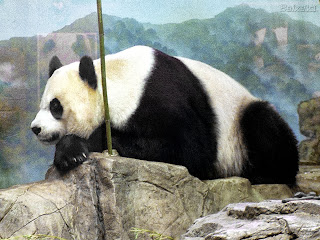Royal eagle
Characteristics
The royal eagle, also known as golden eagle is a bird of prey diurnal, belongs to family Accipitridae, class Aves, their size varies from 66 cm to 1 meter in length, wingspan this eagle can be 1 5 meters by 2.5 meters and its weight can vary between 2.5 kg to 7 kg.
Feeding
This bird feeds on rodents such as rats, other smaller birds, Reptiles like lizard, carrion and moles.
Behavior
Eagles form couples and live like a lifetime, so are monogamous, choose a territory for their hunts whose extension should have around 55km. They are very fast and reach a speed of between 45 and 50 km / h, and can perform dives at speeds up to 300 km / h in search of prey sighted. Some species of eagles typically migrate, others live in Alaska and Canada where moving to the South in search of more food when they become scarce in the North.
Reproduction
The golden eagle reproduces once every couple years and is very dedicated to nest building that will host eggs, rocky places are preferred for construction, preferably inaccessible places, very high and precipitous slopes, or also in tree branches. The nests can be quite large reaching 3 meters in diameter, they must accommodate between 1 and 4 eggs to be hatched by the couple about 35 to 45 days. The law of the jungle valley from birth, the first calf born is always the one with more power and often this can kill the other puppies in that are not prevented by their parents, but this should not be understood as a signal neglect of these, is just another law of nature in action.
Habitat
They habitam Western Europe, Asia, North African, occasionally saws Portuguese preferentially being seen em montanhosas royal highlands.
Curiosities
- There are records Scenes Amazing Animal weighing about 3.5 kg being loaded in midair by a golden eagle. His ability to swim is awesome when looking for their prey. The golden eagle is able to hunt animals like a goose, for example, proportionately large for its size. It has an incredible ability to glide, effortlessly, for hours, for it uses the thermals on flights really magnificent. It has a privileged view that allows us to observe the slightest movement on the ground, thus favoring their excellent skills for hunting.
- -You can also see a documentary about the eagles, an eagle hunting a sheep. In addition to various photo galleries of eagles and eagle species information such as: gray eagle, golden eagle and the eagle's white head.










